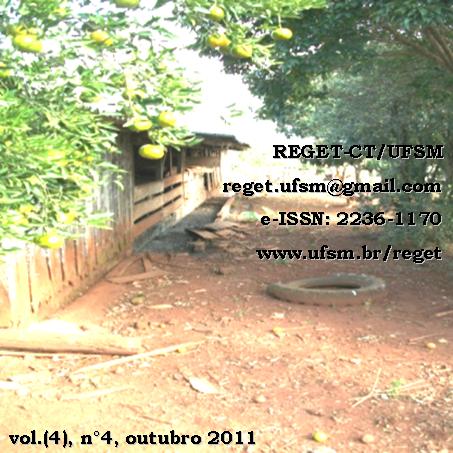BENEFÍCIOS POTENCIAIS DE PLANTAS DANINHAS: UMA PERSPECTIVA DE EDUCAÇÃO AMBIENTAL
DOI:
https://doi.org/10.5902/223611703901Palabras clave:
Plantas Daninhas, Potencial, Manejo Sustentável.Resumen
http://dx.doi.org/10.5902/223611703901
O presente trabalho visa a fazer uma análise diferenciada das plantas consideradas daninhas, encontradas no município de Paraíso do Sul. Foi efetuada pesquisa sobre as potencialidades agronômicas, medicinais e econômicas destas espécies. Para isso, foram realizadas coletas em lavouras de milho (Zea mays L.), localizadas em dez áreas no interior do município. As espécies foram identificadas. As espécies selecionadas foram as mais abundantes, sendo elas: Amaranthus deflexus L., Bidens pilosa L., Commelina erecta L., Cynodon dactylon (L.) Pers., Cyperus hermaphroditus (Jacq.) Standl., Digitaria ciliaris (Retz.) Koeler, Digitaria nuda Schumach., Echinochloa colonum (L.) Link, Euphorbia heterophylla L., Galinsoga parviflora Cav., Polygonum punctatum Elliott, Portulaca oleracea L., Richardia brasiliensis B.A. Gomes, Scoparia dulcis L., Sida rhombifolia L., Stemodia verticillata (Mill.) Hassl. e Urochloa plantaginea (Link) R.D. Webster. Com base nos dados apresentados, busca-se estimular a população a mudar sua opinião comum sobre essas espécies. Este estudo servirá de subsídio para futuras ações de educação ambiental.
Descargas
Citas
CENTRO ECOLÓGICO IPÊ. Agricultura Ecológica. Alguns princípios básicos. Centro Ecológico Ipê, 2002. 52p.
CHRISTOFFOLETI, P. J. Benefícios potenciais de plantas daninhas: I Nutricêuticos e Fitodescontaminantes ambientais. Revista Planta Daninha. v. 19, nº. 1, Viçosa, 2001. p. 151-153.
FLECK, N. G. “Minha Opinião: Herbologia”. Revista Ciência das Plantas Daninhas. v. 14, nº. 2, 2007. p. 9-10.
GARLET, T.M.B.; IRGANG, B.E.; 2001. Plantas medicinais utilizadas na medicina popular por mulheres trabalhadoras rurais de Cruz Alta, Rio Grande do Sul, Brasil. Revista Brasileira de Plantas Medicinais. v. 4, nº. 1, Botucatu, 2001. p. 9-18.
HILLOCKS, R.J. The potential benefits of weeds with reference to small holder agriculture in Africa. In: Integrated Pest Management Reviews. v. 3, p. 155-167, 1998.
INSTITUTO BRASILEIRO DE GEOGRAFIA E ESTATÍSTICA. Estimativa da população. Disponível em:
Acesso em: 14 mai. 2010.
KISSMANN, K.G. Plantas infestantes e nocivas – Tomo I. 2. ed. São Paulo: BASF, 1997
LORENZI, H.; MATOS, F.J.A. Plantas medicinais no Brasil: nativas e exóticas. 2. ed. Nova Odessa: Instituto Plantarum, 2008.
PINTO, D. et al. Metabólitos secundários isolados de Richardia brasiliensis Gomes (Rubiaceae). In: Revista Brasileira de Farmacognosia. v.18, n. 3, 2008. p. 367-372.
SOUZA, V.C.; LORENZI, H. Botânica Sistemática. Guia ilustrado para a identificação das famílias de Angiospermas da flora brasileira, baseado em APG II. 2.ed. Instituto Plantarum de Estudos da Flora Ltda. Nova Odessa, 2008.
VENDRUSCOLO, G. S.; MENTZ, L.A.. Levantamento etnobotânico das plantas utilizadas como medicinais por moradores do bairro Ponta Grossa, Porto Alegre, Rio Grande do Sul, Brasil. v. 61, n. 1-2. IHERINGIA, Sér. Bot., Porto Alegre, jan/dez., 2006. p. 83-103.





